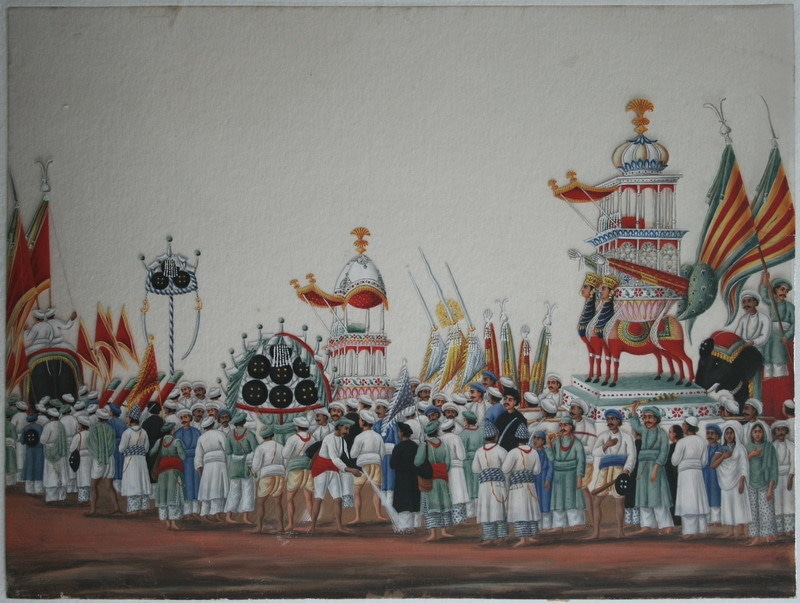
Muharram procession. Anglo-Indian (a.k.a. 'Company School') at Patna, c. mid-19th
century. Opaque watercolour on mica. Attributed to Shiva Lal or his
workshop.
Dr.Mazhar Naqvi
Even though Muharram has been observed in Indo-Pak
subcontinent for several centuries, the visual presentation of Taziadari had to
wait till 17th century surprisingly. This happened despite the
availability of both Hindu and Muslim painters in the era before the arrival of
the British.
It is on record as to how Mughal Emperor Humayun
granted land for Imam Chowks all over his kingdom and the Hindus used to
participate in Muharram ceremonies at the time of Akbar the Great, it is
puzzling that no visual presentation of Ayam E Aza dating back to 16th
century has come to light what to talk about centuries that preceded.
Muharram’s first visual presentation surfaces
in 17th century with names of two Hindu painters i.e.Sevak Ram and
Shiv Lal. They worked under instruction from East India Company Officials who
witnessed Muharram rituals with sense of shock, astonishment and disbelief. The
British found rituals puzzling in view of large gatherings on Ashura day and
asked local painters to portray the mourning ceremonies. While most of them remain
anonymous, names of Sevak Ram and Shiv Lal are available
as their work found place in prominent museums of the world.
The
British and Europeans were patrons of a school of art called the Company Style
or Kampani Kalam. The style blended traditional elements of the miniature
school with a Western treatment of perspective, often in watercolours. They are
static in nature and fail to depict cities or self-flagellation yet they are
solemn and take the observers to silent
pages of the subcontinent's visual history, besides allowing a small glimpse of presence of Taziadari with
supporters in abundance.
Source :The Dawn/Picture Courtesy Google Images
No comments:
Post a Comment